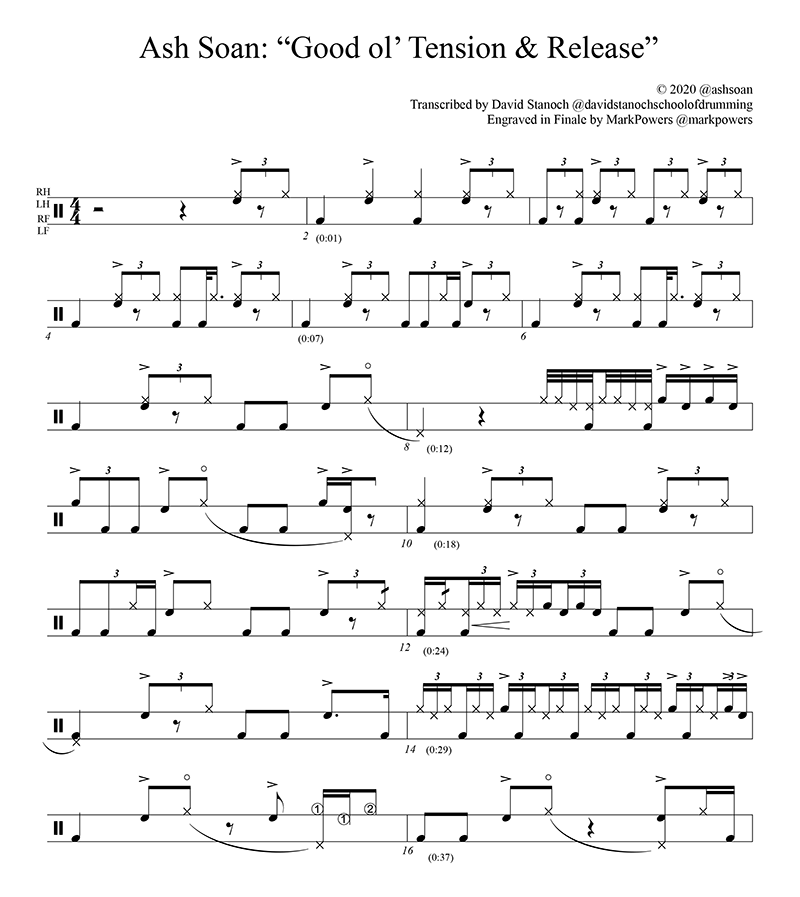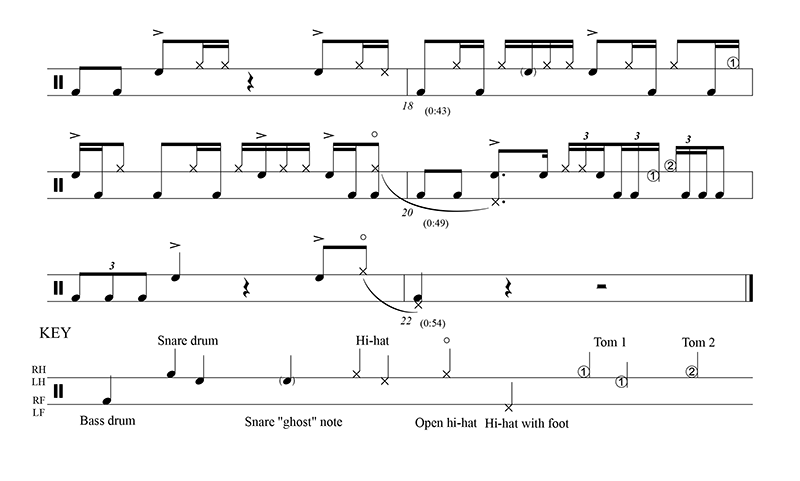by
Rhythm Scene Staff
| Mar 06, 2023
Ash Soan is a prolific and in-demand studio and touring drummer who has a well-respected presence on social media. I originally came across this performance clip by Ash on his Twitter account in the Autumn of 2019, as I was interested in getting more familiar with his work ahead of his PASIC appearance in November of that year.
This particular track really caught my ear because it seemed to me, stylistically, to be a good example of how to approach the Neo-Soul style of drumming that features what some call a “drunken” or “strung” (straight + swung combined) feel, where the eighth-note subdivision is sometimes neither perfectly straight nor a perfect shuffle rhythm, but rather is more elastic and flexible on the offbeat, “in the cracks,” between straight and swung.
The main reason I think this performance is a good example for getting into that style of playing is that, while there is a slight bit of overlapping straight and swung feel (see bars 4 and 6), the bulk of the solo creates the illusion of that feel by more directly mixing between straight and swung eighth notes, which sets up a strong foundation for being able to then “bend” them stylistically.
In Afro-Cuban rhythmic vocabulary, in particular, you’ll hear the same approach used regularly. To advance towards playing more “in the cracks,” think of how horn players in jazz play legato eighth notes, particularly at faster tempos, that nest between “straight eighth” and “shuffle” subdivisions and take that approach at a slower tempo.
This is a fun solo to play because the beats are more challenging than they might look to lay in the pocket as you hear Ash play them, and the piece is peppered with a variety of Ash’s interesting, unique fills and phrasing, which combine great feel, taste, and space with more chops than perhaps meets the eye. Take them apart slowly at first and work them up until they feel good!
I worked with Ash directly to update the original video clip to include the notation of the transcription as well so you can see it as you watch and listen, all at once. Thank you, Ash!
A couple of notation notes:
The two-line staff is based on the same as my teachers, Elliot Fine and Marvin Dahlgren, introduced in their book, 4-Way Coordination. It was, at that time. an updated version of the innovative Swiss Basel one-line staff style of snare drum notation, in which the sticking is illustrated with the right-hand above the line and the left-hand below the line. Fine and Dahlgren added a second staff line below the hands for the feet on the drumset, with the right foot (typically playing bass drum) above the bottom line and the left foot (typically playing hi-hat) below it.
The advantage is you can see the stickings, instead of having to write them out, as well as the foot patterns right inside the rhythm.
The Key for the notation is found at the bottom of the transcription. Everything you’ll find there should be pretty standard except for the tom-tom notes, which are labeled 1 and 2. This is done simply to help you know which drum to play, as “1” refers to the rack tom and “2” refers to the floor tom.
Work towards ultimately playing along with the clip to match up with the synth programming and complete the musical application aspect of the experience. You'll come away with some sweet new licks for your own vocabulary as well.
For more Ash Soan, check out the PAS Playlist on Spotify, curated by Drum Set Committee member Christian Dorn: https://open.spotify.com/playlist/01a6Nv9EAAdJs4JRvStshM?si=06920fd2099f4efb
Watch the Video.


